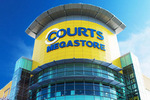 Martin Lee (left) has extensive experience in investing: from regulated investments to private deals; from multi-bagger wins to the blowing out of a trading account; from genuine opportunities to scams, all these and more – "I have been there and done that". This article is reproduced with permission from www.martinlee.sg
Martin Lee (left) has extensive experience in investing: from regulated investments to private deals; from multi-bagger wins to the blowing out of a trading account; from genuine opportunities to scams, all these and more – "I have been there and done that". This article is reproduced with permission from www.martinlee.sg
HERE'S A review of some of my investing moves in 2014.
This is not something that I have done publicly before but I would like to do it more often if readers like you find it useful. Feel free to give your comments at the end of this post.
I will be be covering three instruments that I use: Singapore equities, forex and futures.
Part 1 of the review will cover Singapore equities which are mainly long term concentrated positions.
In 2014, there were two major divestments and one acquisition in my portfolio. This left me with two main holdings in my equity portfolio at the end of 2014.
I do own a few other companies with odd lots here and there but those are considered insignificant in the greater scheme of things.
|
When Fragrance Group spun off the hotel arm as GP Hotels in 2012 at a price of $0.26, it did not take me long to acquire some shares of GP Hotels. » Divestment of Saizen REITS
|
» Acquisition of Courts Asia
 I am sure everyone knows what business Courts is in. This is a new position that I acquired in late 2014.
I am sure everyone knows what business Courts is in. This is a new position that I acquired in late 2014.
The interesting thing about Courts was that Courts Singapore and Courts Malaysia were previously listed on the Singapore Stock Exchange and the Kuala Lumpur Stock Exchange, respectively, but were privatized in 2007 by private equity groups. They were then consolidated and relisted on SGX in 2012 at $0.77 a share.
This is the type of monkey business that private equity funds do. Buy low (delist) and sell high (IPO).
Now, why should I want to be on the other side of their trade?
I did not subscribe to any shares during the IPO and the price went up to more than $1.10 after listing. After that, it dropped steadily and I took notice of the company again when it started to buy back its own shares at around $0.60+.
Not bad for the company, making easy profits. IPO at $0.77 and buy back shares at $0.60.
The profits comes partly at the expense of some IPO investors who sold at lower prices.
I can be a very patient investor (This is both a good and bad thing). I tracked the price (and buybacks) of Courts Asia for almost one year before I finally bought some shares in November 2014 at $0.40.
This happened to be at the recent low and the price has rebounded by almost 20% since. Unfortunately, this also means that I’m unable to accumulate more holdings at my initial low price. So, the quick price jump is not necessarily a good thing for me.
Lesson : If you are a long term investor, you actually want prices to remain low for as long as possible so that you can continue to buy more at low prices over time. Incidentally, Courts Asia is not my first foray into an electronics business.
Side Story About Pertama
Back in 2001 when I first started investing, I bought some shares of Pertama at $0.255. You might find its new name more familiar – Harvey Norman.
The company was profitable and kept paying increasing dividends every year. There were years where the dividends I received was around 20% yield of my original purchase price.
The only reason I sold Pertama eventually was that it was delisted in 2013 at $0.65 by its majority shareholder. Before delisting, the shares were suspended for more than a year as the free float was too low. This means that you can’t sell the shares even if you wanted to.
That suspension is no problem for a long term shareholder with the mindset of a business owner but might pose considerable problems for a trader with a short-term mentality.
The sad thing about my investment in Pertama was that I only bought one lot in 2001. Yes, one pathetic lot.
To add insult to injury, I did not buy more of it for the next ten years. So even though the returns were high on a percentage basis, the absolute amount was peanuts (not the $600,000 one).
However, I did buy a big chunk of it at $0.52 in 2012 before it got suspended from trading. Made 30% by holding it for another two years before it got delisted. So overall still not too bad lah.
» Missed Opportunity With Hyflux
Hyflux has been on my watchlist ever since its IPO more than ten years ago.
The valuations (PE) can be a bit rich at times but this is the type of share that can suddenly become a market favourite. Just take a look at its chart.
Those who bought it at IPO and managed to sell it at $5 would have laughed all the way to the bank. Of course, selling at the peak is extremely difficult in practice.
On the contrary, if you had gotten caught during the downtrend, the losses would have been brutal.
In the case of Hyflux, my patience did me no favour.
Ever since the price reached $1 last year, I have been monitoring it more frequently.
When it hit a low of $0.71 in December 2014, I was very close to buying some of it.
Unfortunately, I was sucking my thumb and didn’t do anything. The price has gone up by more than 20% since. This is what Warren Buffet would call a mistake of omission.
Now, I’m not sure when I will be buying shares in Hyflux, if ever.
And with that, I round up my 2014 adventures with Singapore equities. Stay tuned for my adventures in futures and forex in part 2 of my review.
Recent story: LIAN BENG Is A 'Buy', COURTS, A 'Hold'




